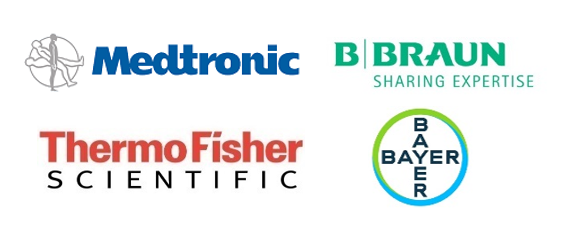Market Overview:
"The global graft delivery device market was valued at US$ 8.6 billion in 2024 and is expected to register a CAGR of 9.8% over the forecast period and reach US$ 19.9 billion in 2033."
|
Report Attributes |
Details |
|
Base Year |
2024 |
|
Forecast Years |
2025-2033 |
|
Historical Years |
2021-2024 |
|
Graft Delivery Devices Market Growth Rate (2025-2033) |
9.8% |
Graft delivery devices play a crucial role in modern medical procedures by facilitating the efficient and precise delivery of graft materials. These devices are used in various fields, including orthopedic, cardiovascular, and plastic surgery. By ensuring accurate placement and controlled release of grafts, these devices enhance surgical outcomes, promote tissue regeneration, and accelerate healing.
Demand for graft delivery devices is primarily driven by factors such as technological advancements, rising prevalence of chronic diseases requiring grafts, and increasing adoption of minimally invasive procedures. Surgeons and patients alike prefer these devices for their ability to streamline surgeries, reduce complications, and optimize patient recovery, making them an indispensable tool in modern healthcare.
The global graft delivery devices market is registering significantly steady revenue growth due to advancements in technology used in the healthcare sector and increasing need for orthopedic, cardiovascular, and plastic surgery procedures. These devices enable offering of a range of services and initiatives focused on enhancing surgical outcomes.
Compliance with regulatory standards and rigorous analysis provide valuable insights, ensuring safe and effective graft delivery for improved patient outcomes. With ongoing advancements and innovations, the graft delivery devices market continues to play a vital role in modern healthcare, driving advancements in surgical procedures and tissue regeneration.
Graft Delivery Devices Market Trends and Drivers:
Technological Advancements: The market is registering constant innovation, with the development of advanced graft delivery devices that offer improved precision, control, and ease of use. These technological advancements are enhancing surgical outcomes and supporting market revenue growth.
Rising Chronic Diseases: Increasing prevalence of chronic diseases, such as cardiovascular diseases and orthopedic disorders, is driving demand for graft delivery devices. These devices play a crucial role in procedures like bypass surgeries, joint replacements, and tissue regeneration, and increasing need for performing such procedures is contributing to market revenue growth.
Minimally Invasive Procedures: Rising preference for minimally invasive procedures due to their benefits, such as reduced scarring, shorter hospital stays, and faster recovery. Graft delivery devices enable surgeons to perform minimally invasive graft procedures, leading to increased adoption.
Rapidly Aging Population: The rapidly aging global population is creating significant rise in graft delivery devices demand. Older adults are more likely to require grafts for various conditions, such as degenerative joint diseases or vascular disorders. This demographic trend is contributing to market growth.
Increasing Healthcare Expenditure: Rising healthcare expenditure, particularly in developing economies, is driving steady demand for advanced medical devices. Governments and healthcare organizations are investing in graft delivery devices to improve patient outcomes, which is positively impacting market revenue growth.
Graft Delivery Devices Market Restraining Factors:
High Cost of Graft Delivery Devices: The cost associated with graft delivery devices can be a significant barrier to market growth. The high price of these devices can limit their accessibility, especially in developing regions with limited healthcare budgets, leading to slower adoption and revenue growth.
Stringent Regulatory Requirements: Graft delivery devices are subject to strict regulatory standards and approval processes. Complying with these requirements can be time-consuming and costly for manufacturers. Delays in regulatory approvals or failure to meet compliance can limit market entry and revenue growth.
Limited Reimbursement Policies: In some healthcare systems, the reimbursement coverage for graft delivery devices may be limited or uncertain. This can deter healthcare providers from adopting these devices or restrict patient access due to financial constraints, and negatively impact market growth.
Lack of Skilled Professionals: The effective use of graft delivery devices requires skilled healthcare professionals who are trained in their proper handling and application. Shortage of professionals or inadequate training can limit the adoption and utilization of these devices, and affect revenue growth.
Potential Complications and Risks: Like any medical procedure, graft delivery carries inherent risks and potential complications. Concerns regarding adverse events, such as infections, graft rejection, or surgical complications, can lead to hesitancy among healthcare providers and patients, thereby impacting adoption and market growth.
Graft Delivery Devices Market Opportunities:
Expansion of Emerging Markets: Emerging markets, particularly in Asia Pacific, Latin America, and the Middle East, offer significant growth potential. Companies can focus on expanding their presence in these regions by establishing strategic partnerships, distribution networks, and localized manufacturing facilities to tap into the increasing demand for graft delivery devices.
Technological Advancements: Continued research and development in graft delivery device technology present opportunities for companies to introduce innovative and advanced products. Investing in technologies like robotics, 3D printing, and biocompatible materials can provide a competitive edge and attract customers seeking the latest advancements in graft delivery.
Minimally Invasive Procedures: The shift towards minimally invasive procedures is gaining traction globally. Companies can develop graft delivery devices specifically designed for minimally invasive surgeries, such as arthroscopy or endovascular procedures. Offering devices that facilitate precise and efficient graft placement in these procedures can drive revenue growth.
Focus on Patient-specific Solutions: Personalized medicine and patient-specific treatments are on the rise. Companies can explore opportunities to develop graft delivery devices that cater to individual patient needs. This can include customizable graft sizes and shapes or devices that enable tailored delivery techniques, providing a unique selling point and capturing a niche market segment.
Collaborations and Partnerships: Collaborating with healthcare institutions, research organizations, and academic institutions can open avenues for companies to conduct clinical trials, gather real-world data, and gain insights into emerging trends. Such partnerships can drive innovation, enhance product development, and provide a competitive advantage, leading to increased revenue streams.
Regional Level Analysis:
Regional analysis in the global graft delivery devices market highlights key regions and countries that exhibit significant potential for product sales and demand. North America, Europe, and Asia Pacific are prominent regions with established healthcare infrastructures and high demand. Emerging markets such as India, China, and Brazil show considerable growth opportunities due to increasing healthcare expenditure and advancements in medical technology. Preference and demand are driven by regional developments, such as regulatory reforms, healthcare investments, and adoption of minimally invasive procedures.
Government initiatives across these regions include funding for research and development, healthcare infrastructure development, regulatory reforms, and programs aimed at promoting medical innovation. These initiatives support revenue growth in the graft delivery devices market by fostering a conducive environment for product development, market expansion, and improved patient access to advanced treatment options.
Leading Companies in Graft Delivery Devices Market & Competitive Landscape:
The global graft delivery devices market features a competitive landscape with a number of key players accounting for market share. Companies in this market focus on product innovation, strategic collaborations, mergers and acquisitions, and geographic expansion to gain a competitive edge. The market is characterized by intense competition, with companies continuously focusing on offering advanced graft delivery solutions and establishing strong market presence.
Company List:
- Medtronic plc
- Johnson & Johnson
- Stryker Corporation
- Baxter International Inc.
- Boston Scientific Corporation
- Terumo Corporation
- Cook Medical Inc.
- Becton, Dickinson and Company
- Smith & Nephew plc
- Zimmer Biomet Holdings, Inc.
- Olympus Corporation
- Cardinal Health, Inc.
- Integra LifeSciences Holdings Corporation
- Teleflex Incorporated
Research Scope:
|
Report Metric |
Report Details |
|
Graft Delivery Devices Market size available for the years |
2021-2033 |
|
Base Year |
2024 |
|
Forecast Period |
2025-2033 |
|
Compound Annual Growth Rate (CAGR) |
9.8% |
|
Segment covered |
By Product Type, Excavator Size, Operating Weight, End-Use Industry, Sales Channel, Excavator Class, Application, Blade Configuration, Power Source, and Regions |
|
Regions Covered |
North America: The U.S. & Canada Latin America: Brazil, Mexico, Argentina, & Rest of Latin America Asia Pacific: China, India, Japan, Australia & New Zealand, ASEAN, & Rest of Asia Pacific Europe: Germany, The U.K., France, Spain, Italy, Russia, Poland, BENELUX, NORDIC, & Rest of Europe The Middle East & Africa: Saudi Arabia, United Arab Emirates, South Africa, Egypt, Israel, and Rest of MEA |
|
Fastest Growing Country in Europe |
France |
|
Largest Market |
North America |
|
Key Players |
Medtronic plc, Johnson & Johnson, Stryker Corporation, Baxter International Inc., Boston Scientific Corporation, Terumo Corporation, Cook Medical Inc., Becton, Dickinson and Company, Smith & Nephew plc, Zimmer Biomet Holdings, Inc., Olympus Corporation, Cardinal Health, Inc., Integra LifeSciences Holdings, Teleflex Incorporated, among others |
Frequently Asked Question
What are some key factors driving revenue growth of the global graft delivery devices market?
Some key factors driving revenue growth of the global graft delivery devices market include technological advancements, rising prevalence of chronic diseases, increasing adoption of minimally invasive procedures, aging population, and growing healthcare expenditure.
Which end-users are the primary consumers of graft delivery devices?
The primary consumers of graft delivery devices include hospitals, ambulatory surgical centers, specialty clinics, and other healthcare facilities.
What are some of the major applications for graft delivery devices?
Graft delivery devices are used in various applications, including orthopedic surgery, cardiovascular surgery, plastic surgery, general surgery, and other surgical procedures.
What are the different types of graft materials used with graft delivery devices?
Graft materials used with graft delivery devices include autografts (from the patient's own body), allografts (from a donor), xenografts (from a different species), and synthetic grafts.
Which regions are registering significant growth in the global graft delivery devices market?
North America, Europe, Asia Pacific, Latin America, and the Middle East & Africa are registering significant revenue growth in the global graft delivery devices market. However, specific regional growth rates may vary based on factors such as healthcare infrastructure, government initiatives, and market dynamics.

